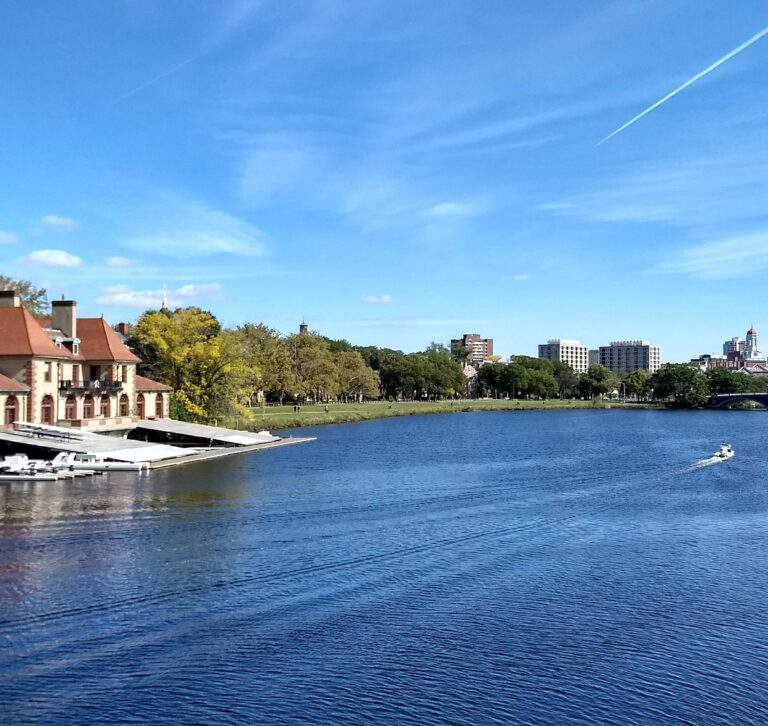8 tips for transitioning to a career in edtech or ID
This past week, I celebrated my first year of working as an edtech at Boston University. I was fortunate enough to have a job lined up before graduating from my program just a little over a year ago. Finding a job is the culmination of my career switch after working in international development for over a decade.
Now that I’m done with papers, projects and exams, and have stopped updating my job application tracking sheet, over the past year, I reflected on the steps I took and other factors that brought me to this point in my career. I hope that taking stock of my experience will help those who are also considering a shift to a new and exciting career in instructional design and edtech. Below I outline a few pointers which I believe helped me get a couple of job offers and clinch a job in edtech.
- Brush up on learning theories and frameworks
Whether through a short course or a full-blown graduate degree, a good grasp of education and multimedia learning theories and frameworks is essential to ground your knowledge of the discipline. I already knew how to administer blogs, webinars, and in-person training, but I wasn’t familiar with Backward Design, and the works of Bloom, Gagne, and Moreno and Mayer. This is the added value that instructional designers bring to a team that may consist of a videographer or a learning management system administrator. It is crucial to anchor learning projects to theories and be methodical in choosing appropriate digital interactions and learning assessments, and not just pick them on a whim.
- Create projects and an ePortfolio
I’m a big fan of project-based learning. This will sound a little meta, but one of the ways to consolidate the learning theories and frameworks you will learn in class (See #1 above) is to apply them by creating projects. They will also form part of the ePortfolio you can showcase to prospective employers if asked during the recruitment process. Especially as a career changer, I needed to show I’m capable of applying my knowledge of learning theories and seeing an instructional design project through the entire ADDIE process.
I wasn’t very intentional in choosing the projects I worked on. If you look at my portfolio, it’s an eclectic collection of Canvas and edX courses, a science engagement project, and an online game using Zoom and Google Sheets. I believe these diverse projects allowed me to highlight my broad knowledge and interests as well as adaptability and creativity when it comes to different types of projects, learning experiences, and technologies.
- Work as a graduate student assistant
While deciding to do my program, I knew I needed to gain experience as a newcomer to the profession. I negotiated a graduate associate position at Georgetown University’s center for teaching and learning. While the salary helped defray some of the cost of going back to school and living in an expensive city like Washington, DC, learning the ropes of developing online courses, conducting research on various tech platforms, and assisting faculty with their tech needs were perhaps even more valuable.
There were times I doubted this decision to work alongside my studies, wishing I had more time to work on exciting personal projects instead. Before the summer session, I even considered doing an internship outside of the university to diversify my experience, but I was somehow forced to stick it out because of the pandemic. Yet, during my job interviews, I drew on this work experience which proved valuable to illustrate that I’ve “been there and done that,” and for examples of challenges and approaches I’ve encountered in a professional setting.
- Review and reframe my resume
My original CV was peppered with international development jargon such as “portfolio review,” “policy analysis,” and “agricultural input distribution,” which to HR specialists in education institutions might suggest that I’m applying to work at the UN. Midway through my application cycle, I revisited my CV and thought long and hard about duties I’ve performed in the past such as organizing knowledge-sharing events, conducting and evaluating training and workshops, and administering websites and webinars – tasks and projects where I used skills related to instructional design and technology. I believe highlighting this skill set signaled that I have transferable skills and am not starting my ID and edtech career from scratch.
5. Conduct informational interviews
As an introvert, I shy away from mixers and networking events. Still, I knew I had to reach out to people who were already working in the space I wished to enter. I had to psych myself up to asking for introductions, reaching out to people who don’t know me, and eventually speaking with them. Because of the pandemic, gone are the days of coffee meet-ups which have been replaced by Zoom calls. Virtual calls may be less personal, but this has been convenient for me and my interviewees who are located far from DC. I virtually met a business developer in a leadership position in New Hampshire, a university vice provost in Boston, a metadata expert in New Jersey, and a doctor of osteopathic medicine in Baltimore.
I managed my expectations during these conversations, not hoping to snag a job at the end of a call. Rather, I was genuinely interested in their work, asking them how they ended up in their current roles, what they like about their profession, and how they deal with the challenges and opportunities they face. Also, informational interviews were a great way to prepare for job interviews, where I would be on the other side of the process.
6. Keep track of time and your job application
I kept a spreadsheet to track my applications – job links, dates of application and rejection, and marginal notes. Without a system, it’s easy to lose track of them. I began sending out applications around September and I received my first job offer about three months later, after submitting close to a hundred applications.
In addition, consider the various timelines involved. When do higher ed institutions tend to hire staff? The hiring process may take about two months from the first time an HR specialist makes initial contact. Meanwhile, I also had to apply for my employment card, time my start date, and juggle my student job and classes in my final semester. In hindsight, I’m glad I made the call to take electives during the summer, which lightened my course load in the fall and gave me the bandwidth for my job search.
7. Prepare a portfolio presentation in advance
I started working on my ePortfolio by taking a studio course during my second semester specifically for the purpose of jumpstarting the task. Don’t wait until your last project is finished to assemble your portfolio. It also helped that I like tinkering with content management platforms, which I can trace to 2003 when I started my own blog. I chipped away at the work – choosing a theme, organizing the structure and information, and writing drafts of the “About Me” page and my learning design philosophy. Over a week during my summer break, I buckled down to develop the first draft of my ePortfolio, and by my final semester, I only had to make incremental changes in time for my presentation and job applications.
If you can, also prepare a slideshow presentation in advance with three to five projects which you can easily choose from and tailor when the time comes to present them to a potential employer. Search committees for instructional design positions will assume you have a portfolio, and will likely ask you for a presentation if you advance in the recruitment process. I thought it was as easy as walking my interviewers through my online portfolio, but was advised by my manager to prepare by picking two projects to dive deeply into. So that’s exactly what I did one weekend, before the Monday I was scheduled to give two portfolio presentations. I wish I’d had a master slide deck ready so I could have avoided the stress from last-minute cramming.
8. Scan the job market to manage employment expectations
The Covid-19 pandemic presents both difficulties and opportunities for the labor force. I remember the director of my program saying that we, his students, will be in demand in the job market, as we walked down the hallway on our way to a meeting a few days before the university shut down in March last year. We saw universities impose hiring freezes as a cost-cutting measure, which made me nervous, but I’m glad they also started making exemptions, as we see from job postings for edtech and ID roles, as soon as university administrators realized these positions are essential, even more so during a pandemic.
A year and a half of graduate study, half of it done virtually during the pandemic, and many job applications and interviews later, I’ve successfully pivoted to a new role, a new industry, and now, a new city. In the end, I was in a very fortunate situation in my job search which yielded three job offers – two instructional designer positions and one educational technologist position. Career transitions actually begin as soon as you start considering them. It can be a daunting process, but you can make it more manageable with “good timing,” ample preparation and the right frame of mind and attitude.

